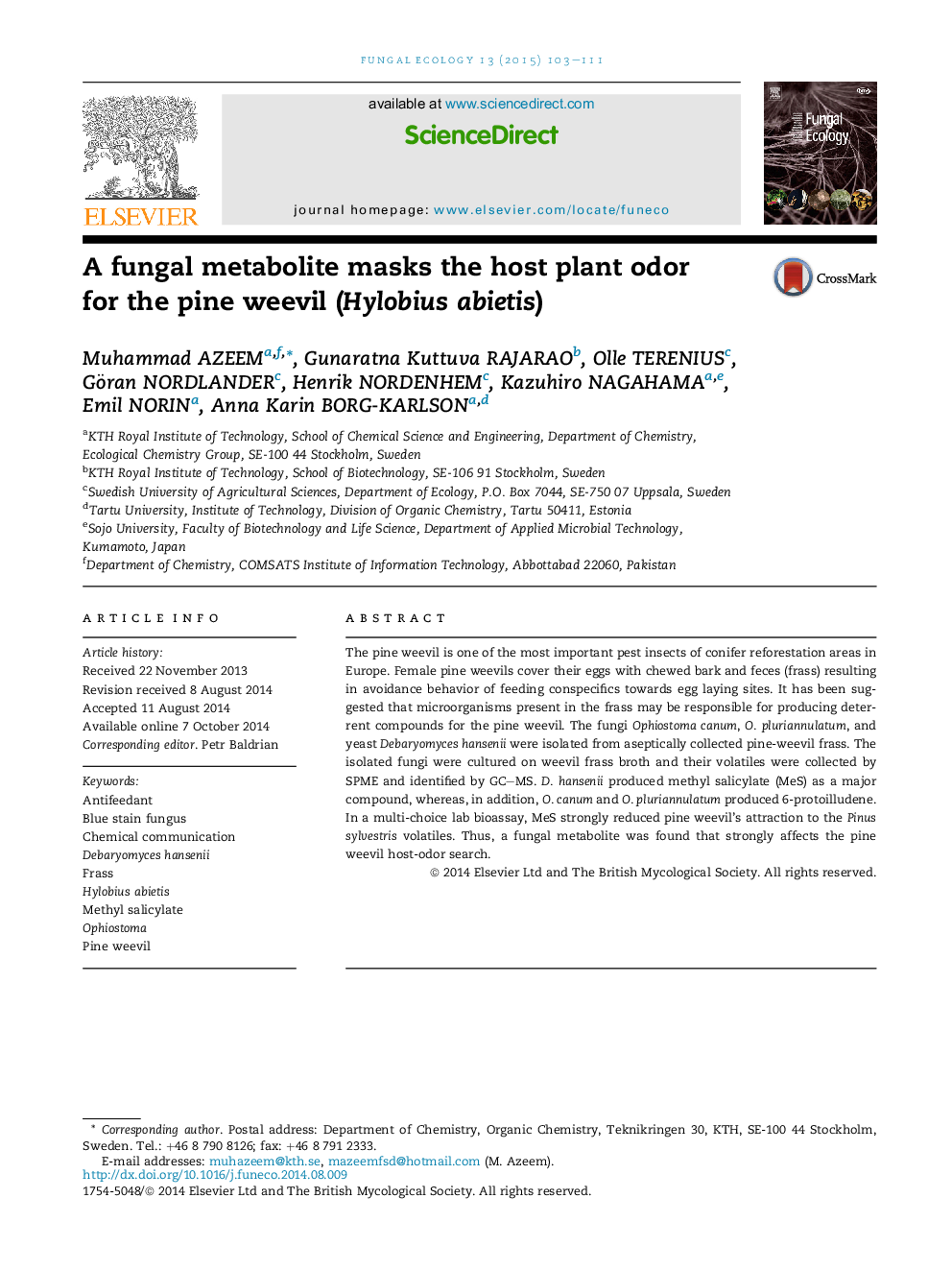| Article ID | Journal | Published Year | Pages | File Type |
|---|---|---|---|---|
| 2053543 | Fungal Ecology | 2015 | 9 Pages |
•Association of blue stain fungi with Hylobius abietis.•Debaryomyces hansenii found in pine weevil frass.•Methyl salicylate produced by fungi.•Methyl salicylate masks the host plant odor.
The pine weevil is one of the most important pest insects of conifer reforestation areas in Europe. Female pine weevils cover their eggs with chewed bark and feces (frass) resulting in avoidance behavior of feeding conspecifics towards egg laying sites. It has been suggested that microorganisms present in the frass may be responsible for producing deterrent compounds for the pine weevil. The fungi Ophiostoma canum, O. pluriannulatum, and yeast Debaryomyces hansenii were isolated from aseptically collected pine-weevil frass. The isolated fungi were cultured on weevil frass broth and their volatiles were collected by SPME and identified by GC–MS. D. hansenii produced methyl salicylate (MeS) as a major compound, whereas, in addition, O. canum and O. pluriannulatum produced 6-protoilludene. In a multi-choice lab bioassay, MeS strongly reduced pine weevil's attraction to the Pinus sylvestris volatiles. Thus, a fungal metabolite was found that strongly affects the pine weevil host-odor search.
